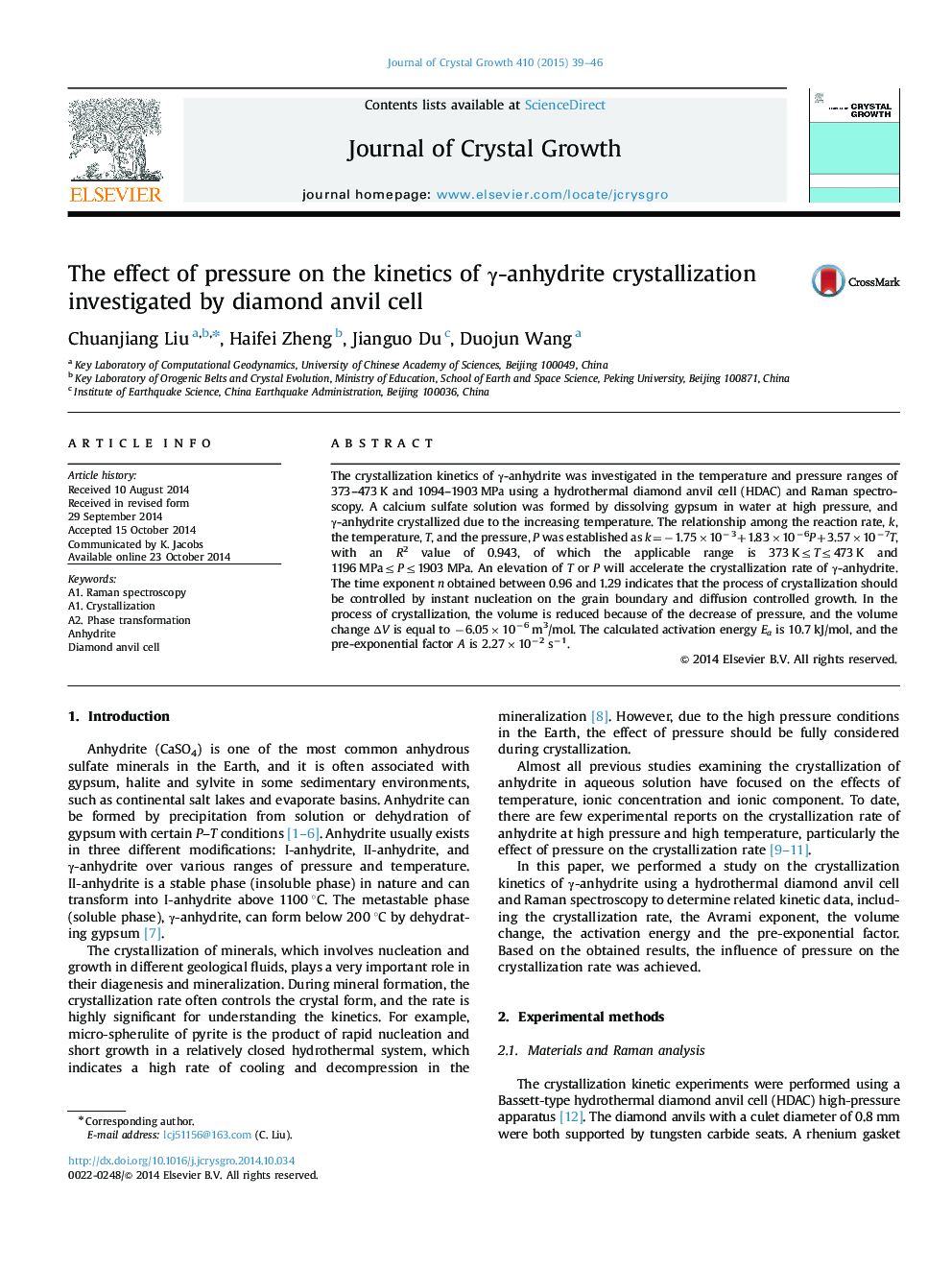| Article ID | Journal | Published Year | Pages | File Type |
|---|---|---|---|---|
| 1790219 | Journal of Crystal Growth | 2015 | 8 Pages |
Abstract
The crystallization kinetics of γ-anhydrite was investigated in the temperature and pressure ranges of 373-473 K and 1094-1903 MPa using a hydrothermal diamond anvil cell (HDAC) and Raman spectroscopy. A calcium sulfate solution was formed by dissolving gypsum in water at high pressure, and γ-anhydrite crystallized due to the increasing temperature. The relationship among the reaction rate, k, the temperature, T, and the pressure, P was established as k=â1.75Ã10â3+1.83Ã10â6P+3.57Ã10â7T, with an R2 value of 0.943, of which the applicable range is 373 Kâ¤Tâ¤473 K and 1196 MPaâ¤Pâ¤1903 MPa. An elevation of T or P will accelerate the crystallization rate of γ-anhydrite. The time exponent n obtained between 0.96 and 1.29 indicates that the process of crystallization should be controlled by instant nucleation on the grain boundary and diffusion controlled growth. In the process of crystallization, the volume is reduced because of the decrease of pressure, and the volume change ÎV is equal to â6.05Ã10â6 m3/mol. The calculated activation energy Ea is 10.7 kJ/mol, and the pre-exponential factor A is 2.27Ã10â2 sâ1.
Related Topics
Physical Sciences and Engineering
Physics and Astronomy
Condensed Matter Physics
Authors
Chuanjiang Liu, Haifei Zheng, Jianguo Du, Duojun Wang,
